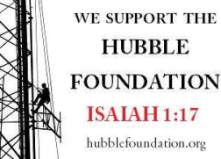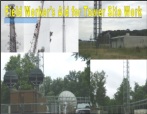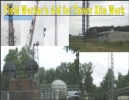Podcast: Play in new window | Download | Embed
Subscribe: Apple Podcasts | RSS
That’s right, the FCC and OSHA DOL have teamed up to use their superpowers for the good of the tower climber. These are two of the most influential divisions of government on American business, the world really, that worked hard to provide a safety guideline for an industry where people die every year. They knew there were issues that need to be addressed and they acted.
Explore all Wade’s books on his Amazon author page, click here!
Did they do it alone? NO! They asked the tower industry, held workshops, and released the RFI for the tower climbers to fill out, anonymously if needed. You all had a say. If you didn’t participate, then you may not have been in the industry, or you didn’t make the time to participate in this momentous event. That’s right, OSHA reached out to the field workers for help. Hey, if you did nothing, then you probably don’t expect anything.
Tower Safety and Instruction has online training and eBooks
at http://teltech-college.com/ where you can get drone, tower, safety, 5G, and deployment material on your laptop! TSI, making the best better.
I am proud to say that I not only participated, but I went to the workshop at the FCC office in DC. I took a day of my time, drove several hours, completed the survey, I did all that I could to help. What did you do? All the people at the conference were very supportive of the initiative. There were many vendors, company owners, carriers, and groups like NATE and the Hubble Foundation and the Tower Family Foundation. The workshop information can be found here. This happened back in 2014, so it took a lot of time to make it happen. Yes, I was blogging then, and I had been trying to help more climbers back then.
Testing CDMA and LTE smartphones or UE devices? Get a great deal on a used and affordable ME7834L test setup here!
One more thing, I think we should all thank the participants of OSHA and FCC who worked diligently to create this and try to raise awareness of the tangled web of climber’s safety.
I don’t climb anymore. I do more engineering, sales, and planning work. I consult, and I write books, and I teach. I coach. So, I am not currently active in the climbing industry other than I bid work, I am still active and keep in touch with the climbing industry. I knew I had to move on, but I still have a passion for this industry. While it’s not as active as it once was, it’s still a critical part of the communications industry. I only did it for 10 years or so, but I really did enjoy it. I learned a lot of what to do and what not to do. I also learned that it  was a completely different lifestyle. A job and a lifestyle that takes some adjustment, one where your life could end any day you go up in the air. I worked with some of the best people I ever met and some of the worst people I ever met. It is an amazing industry.
was a completely different lifestyle. A job and a lifestyle that takes some adjustment, one where your life could end any day you go up in the air. I worked with some of the best people I ever met and some of the worst people I ever met. It is an amazing industry.
There is one thing that we all agree on is that it’s not as profitable as it used to be. The carrier specifically made it a commodity. This means that the experienced climbers are leaving the industry by retirement or just looking for new opportunities. It didn’t seem to matter much because there are plenty of new, inexperienced recruits willing to put their lives on the line so that you can use Tinder on your smartphone, isn’t great how far technology has come?
The Wireless Deployment Handbook Paperback
 The Wireless Deployment Handbook eBook that covers professional carrier end to end deployment of LTE small cells, CRAN, and DAS showing you the proper way to plan for deployment then execute.
The Wireless Deployment Handbook eBook that covers professional carrier end to end deployment of LTE small cells, CRAN, and DAS showing you the proper way to plan for deployment then execute.
Therefore, the FCC and OSHA knew they must get involved, they wanted to save lives, and the best way to do that is by prevention. If they fine a company, it’s too late, the person is usually dead. The aim of this is to make the job as safe as it can be so that we prevent death. I hear about the lawsuits and how people get screwed and get hurt, and some people will never recover. I have also seen people try to scam the charities and industry. Like I said, some of the best and some of the worst people. I think it’s sad that people try to cheat charities, but it happens.
OK, back to the subject at hand, the guidelines. They can be found below:
- http://transition.fcc.gov/Daily_Releases/Daily_Business/2017/db0601/DOC-345151A1.pdf
- https://www.fcc.gov/document/fcc-osha-tower-climber-safety-guide
- https://www.osha.gov/Publications/OSHA3877.pdf
You can download the best practices document.
First, I want to thank the people at the FCC and OSHA that made this happen. Commissioner Wheeler helped to get the ball rolling, but Commissioner Pai has done a great job of keeping the ball rolling, twitter @AjitPaiFCC if you want to tweet him and tell him what a great job he’s done. Many people participated in the workshop and worked all the way to the end. I know that I was contacted personally by Jessica Douma of OSHA and Michael Janson of the FCC. They really worked hard to see this project all the way to the end. It was no quick or easy process. It takes a team, as I listed below.
- Follow me:
Let’s all thank the following:
- Claire Wack, Attorney Advisor, CIPD, WTB, FCC
- Jessica Douma, Regulatory Analyst, OSHA
- Michael Janson, Associate Chief, CIPD, WTB, FCC
- Erin Patterson, Regulatory Analyst, OSHA
- Joseph Jenkins, Team Leader, Marketing and Outreach, Office of Apprenticeship, ETA
- Matthew Warner, Attorney Advisor, CIPD, WTB, FCC
When you read the document, you will see it’s broken down into the following parts.
- Introduction and Background
- This is obvious, right?
- General Topics
- Here they copy general programs that the FCC and OSHA have for the tower climbing industry.
- An overview of Safety and health programs and contracting practices.
- An overview of verification of subcontractors.
- Tower Climbers and Ground Crew Employees
- This is on the front line!
- This goes into how each group or participant in the tower work is responsible for defining and following safe practices. From the climber to the crew, covering contractors and crew member at the site or preparing to go to the site. General safety recommendations.
- Carriers and Tower Owners
- This section covers how the tower owners should not only vet the contractors but have reporting procedures in place to report incidents. Have the processes and protocols in place. Manage complaints properly, log them and attend to them.
- They also cover audits, training, and record keeping. Carriers and tower owners are being asked to participate these practices. This spreads it across the industry. Communication is the key.
- Carriers are asked to provide realistic timelines for deployments. Think about the resources and set up a timeline that makes sense for that project. (Someone’s life depends on it!)
- Tower owners are asked to inspect their tower, provide anchor points where needed, and update leases to mandate safe installation procedures that do not impede anchor points. They need to meet standard TIA-222-G, have a way to report unsafe conditions easily, allow drones to do more work, and ask for photos of their tower from the contractors working there. Keep a record of what you get!
- Turfing Vendors
- First, my opinion – These guys need to be mentioned here because they throw the most climbers all over the place. AT&T has done a great job using turf vendors then laying all the blame on them. They were the scapegoat that AT&T was being investigated for all the deaths that occurred years Wireless Estimator has a good record of climbing deaths by year here.
- This covers training, job specific training, vetting contractors, and outlines ow they should work with contractors.
- They cover communication, reporting, incident investigation. Yes, the turf vendor has a serious responsibility to investigate any incidents or unsafe practices. You need to identify SMEs, (Subject Matter Experts), that can help you do this. When I say SME, I mean someone who really knows what they are doing and they have been doing it for years, not the senior guy on a new crew. We here to save lives people!
- Communicate openly, provide ways to communicate up and down the chain! Have procedures and processes in place so it’s clear how everyone should work, be trained, and report problems and incidents.
- Work site safety practice, this should be defined clearly.
- Tower Construction and Maintenance Contractors
- Here is the front line, again, only the big dogs, or should I say the big tower dawgs? They started with the front line, and they’re ending with the front line.
- Auditing and incident investigations are outlined. While most of you may have this in place, it’s always a good idea to update and see what has changed.
- Outline your work site and safety practices, tailgate meetings, cover safety but don’t become so redundant that it’s blown off. Keep it original and interesting. That takes research and work. Review the JHA, keep it onsite, and update it as needed.
- Record keeping and communication. Do I need to say more? Records of employee training and certifications so that they are available to all parties involved.
- Training – again, train all worksite employees, not just the climbers. Right?
- For additional information, here are some sites that may help:
- https://www.osha.gov/doc/topics/communicationtower/
- https://www.osha.gov/shpguidelines/
- http://www.nsc.org/measure/pages/journey-to-safety-excellence.aspx
- OSHA at 1-800-321-OSHA (6742) or TTY: 1-877-889-5627 or go to osha.gov.
- FCC: 1-888-CALL FCC (225-5322); TTY: 1-888-TELL, FCC (835-5322) or visit the FCC website at fcc.gov.
- The document can be found at https://www.osha.gov/Publications/OSHA3877.pdf
There you go. The FCC and DOL did the best they could to outline this. Tower worker safety seems to be improving in the industry. It pays to be educated and updated.
If you’re interested in what industry leaders are saying, Wireless Estimator does a great job of putting together the voices of the industry at http://wirelessestimator.com/articles/2017/industry-applauds-osha-fccs-long-awaited-communication-tower-best-practices-guide/.
NATE also had good things to say at https://natehome.com/safety-education/osha-fcc-communication-tower-best-practices/ where they also have praise.
Jeff Williams posted a detailed letter at https://blog.npstc.org/2017/06/02/fcc-osha-offer-tower-safety-guidelines/ which summed it up very well.
What does 5G deployment mean? Find out, “The 5G Deployment Plan“, in PDF, eBook, and Paperback!
Be smart, be safe, and pay attention!
See Ya!
The foundations below do beautiful work, helping families in their time of need. Climbers often get seriously injured or die on the job. The foundations below support those families in their time of greatest need!
Hubble Foundation helps the families of climbers in a time of need and beyond with financial support and counseling!
Tower Family Foundation supports the families of tower climbers at the time of crisis when a climber falls with financial assistance and more.















































